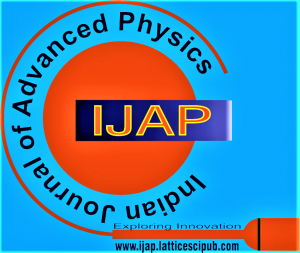![]()
Redefinition of De-Broglie Wavelength Associated with Material Particle
Chandra Bahadur Khadka
Chandra Bahadur Khadka, Student of Trichandra Multiple Campus, Tribhuvan University, Kathmandu, Nepal.
Manuscript received on 29 March 2022 | Revised Manuscript received on 05 April 2022 | Manuscript Accepted on 15 April 2022 | Manuscript published on 30 April 2022 | PP: 14-16 | Volume-2 Issue-1, April 2022 | Retrieval Number: 100.1/ijap.C1020041322 | DOI: 10.54105/ijap.C1020.041322
Open Access | Ethics and Policies | Cite | Mendeley | Indexing and Abstracting
© The Authors. Published by Lattice Science Publication (LSP). This is an open-access article under the CC-BY-NC-ND license (http://creativecommons.org/licenses/by-nc-nd/4.0/)
Abstract: The objective of the work is to reveal the Association of special theory of relativity with De-Broglie wavelength of a particle. It shows that wave nature of a particle is always associated with it’s relativistic properties. The phenomena of interference, diffraction and polarization of light can only be explained on the basis of wave theory of light. These phenomena show that light possesses wave nature. However, certain phenomena like photoelectric effect, Compton effect and discrete emission and absorption of radiation can only be explained on the basis of quantum theory. According to this theory , light propagates in a small packets or quanta and behave like corpuscles or particle. This shows that light possesses particle nature. thus, we can say that light possesses dual nature. The matter also possesses the same dual nature. In order to have wave nature, the particle must satisfy the equation ![]() Where m denotes the mass of particle when it is moving with certain velocity. h=6.62×10-34 is the plank’s constant. C is the velocity of light in free space. This shows that wavelength of a material Particle depends on mass. When mathematical operation is done on above equation, it give complete quantitative properties about the wave nature of a particle.
Where m denotes the mass of particle when it is moving with certain velocity. h=6.62×10-34 is the plank’s constant. C is the velocity of light in free space. This shows that wavelength of a material Particle depends on mass. When mathematical operation is done on above equation, it give complete quantitative properties about the wave nature of a particle.
Keywords: De-Broglie wav length, Dual nature, Quantum theory, Relativity
Scope of the Article: Electromagnetism and Optics
